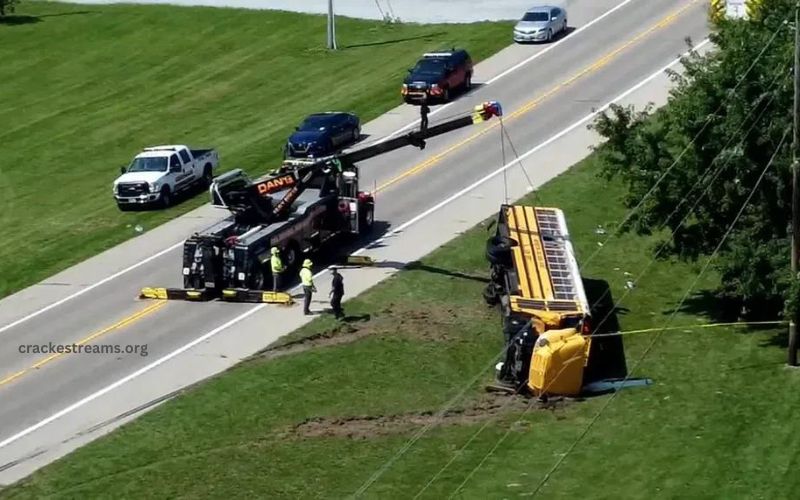On a fateful morning in Clark County, tragedy struck when a school bus carrying dozens of children collided with another vehicle. The incident sent shockwaves through the community, leaving families, educators, and officials grappling with grief and questions about safety protocols. This article delves into the details of the Clark County school bus crash, explores the aftermath, discusses safety measures, and examines the broader implications for school transportation systems nationwide.
The Incident: What Happened?
The school bus crash in Clark County unfolded during rush hour on a typically busy intersection known for its heavy traffic. Preliminary reports suggest that the school bus, operated by Clark County School District, was transporting elementary school children to their morning classes when it collided with a sedan. The impact was severe, resulting in multiple injuries among the children onboard and the drivers of both vehicles.
Eyewitnesses described a chaotic scene as emergency responders arrived swiftly to tend to the injured and secure the area. The local community, already close-knit, quickly rallied together, offering support and prayers for those affected. News of the crash spread rapidly across social media and local news outlets, prompting an outpouring of concern and calls for increased safety measures.
Immediate Response and Rescue Efforts
In the immediate aftermath of the crash, first responders, including paramedics, firefighters, and police officers, rushed to the scene. Their prompt actions were crucial in stabilizing the injured and transporting them to nearby hospitals for urgent medical care. Parents and guardians anxiously awaited news about their children, gathering at the scene and hospitals, seeking reassurance amid the chaos.
Meanwhile, officials from the Clark County School District and local law enforcement initiated investigations to determine the cause of the crash. This included examining traffic patterns, reviewing surveillance footage, and conducting interviews with witnesses and survivors. The priority was to ascertain whether any negligence or external factors contributed to the collision, aiming to prevent similar incidents in the future.
Impact on the Community
The school bus crash reverberated deeply within the Clark County community. Families of the injured children grappled with fear and uncertainty, while the broader community mourned the loss of innocence and questioned the safety of school transportation. Schools in the district offered grief counseling and support services to students, staff, and families affected by the crash, emphasizing the importance of mental health care during such traumatic events.
Local leaders, including the mayor and school board officials, expressed condolences and vowed to prioritize safety improvements in school transportation policies. Community forums and town hall meetings were organized to provide a platform for residents to voice concerns, seek answers, and participate in discussions about preventive measures and emergency response protocols.
Safety Measures and Policy Reforms
In response to the Clark County school bus crash, discussions about safety measures and policy reforms gained momentum both locally and nationally. School districts across the country reviewed their own transportation policies, focusing on driver training, vehicle maintenance, and route planning to minimize risks. The incident underscored the need for stringent safety standards and proactive measures to protect students during their daily commute to and from school.
At the legislative level, lawmakers debated proposals for enhanced funding for school bus safety initiatives, including the installation of seat belts, improved driver screening processes, and mandatory safety inspections. Advocacy groups seized the opportunity to raise awareness about the importance of school bus safety and to push for stricter regulations to prevent accidents caused by negligence or mechanical failures.
Lessons Learned and Moving Forward
As the investigation into the Clark County school bus crash continued, key lessons emerged about the critical importance of preparedness, communication, and community resilience in times of crisis. The incident served as a sobering reminder of the vulnerability of school children during their commute and the responsibility shared by educators, transportation officials, and policymakers to prioritize their safety above all else.
Moving forward, stakeholders vowed to work collaboratively to implement reforms and improvements aimed at preventing future tragedies. This includes investing in advanced safety technologies for school buses, enhancing emergency response training for drivers and staff, and fostering a culture of vigilance and accountability within school transportation departments nationwide.
Conclusion
The Clark County school bus crash was a devastating event that shook the local community and sparked a nationwide conversation about school bus safety. It highlighted the need for continuous improvement in transportation policies, emergency preparedness, and community support systems to protect our most vulnerable population—school children. While the road to recovery may be long and challenging, the resilience and unity displayed in Clark County serve as a testament to the strength of community spirit in times of adversity.




